Themed collection 2018 International Open Access Week Collection

Mechanisms of catalytic reduction of CO2 with heme and nonheme metal complexes
This critical review discusses the thermal and photocatalytic mechanisms of one-, two-, four-, six- and eight-electron reduction of CO2 with metal complex catalysts.
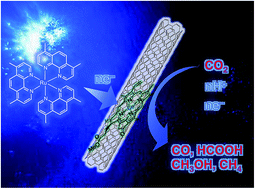
Chem. Sci., 2018,9, 6017-6034
https://doi.org/10.1039/C8SC02220H
Adhesive bacterial amyloid nanofiber-mediated growth of metal–organic frameworks on diverse polymeric substrates
Adhesive curli nanofibers, bacterial biofilms' major protein component, were utilized to mediate the growth of MOFs on various polymeric substrates.

Chem. Sci., 2018,9, 5672-5678
https://doi.org/10.1039/C8SC01591K
Large-scale comparison of machine learning methods for drug target prediction on ChEMBL
The to date largest comparative study of nine state-of-the-art drug target prediction methods finds that deep learning outperforms all other competitors. The results are based on a benchmark of 1300 assays and half a million compounds.
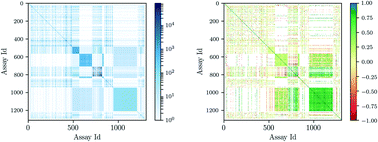
Chem. Sci., 2018,9, 5441-5451
https://doi.org/10.1039/C8SC00148K
Engineering thermoresponsive phase separated vesicles formed via emulsion phase transfer as a content-release platform
Elucidation of cholesterol insertion efficiency into phase-transfer vesicles enables the rational design of phase-separated membranes as thermally-responsive platforms for artificial cell construction.

Chem. Sci., 2018,9, 4851-4858
https://doi.org/10.1039/C7SC04309K
Ruthenium-catalyzed umpolung carboxylation of hydrazones with CO2
The first ruthenium-catalyzed umpolung carboxylation of hydrazones with CO2 to generate important aryl acetic acids is reported.

Chem. Sci., 2018,9, 4873-4878
https://doi.org/10.1039/C8SC01299G
Iron-catalyzed urea synthesis: dehydrogenative coupling of methanol and amines
An iron catalyzed method for selective urea synthesis is described. This approach couples methanol and amines to generate diverse organic ureas.

Chem. Sci., 2018,9, 4003-4008
https://doi.org/10.1039/C8SC00775F
Aldehyde group driven aggregation-induced enhanced emission in naphthalimides and its application for ultradetection of hydrazine on multiple platforms
A new concept of formyl group induced ACQ to AIEE transformation is established in naphthalimide congeners. Also, ultradetection of hydrazine via Schiff base complexation over multiple platforms is presented.
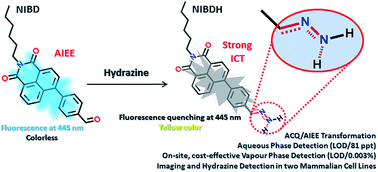
Chem. Sci., 2018,9, 3978-3985
https://doi.org/10.1039/C8SC00643A
Covalent triazine framework modified with coordinatively-unsaturated Co or Ni atoms for CO2 electrochemical reduction
Nickel-modified covalent triazine frameworks effectively reduced CO2 to CO because adsorbed COOH was stabilized on the coordinatively-unsaturated Ni atoms in CTF.

Chem. Sci., 2018,9, 3941-3947
https://doi.org/10.1039/C8SC00604K
Rational design of a water-soluble NIR AIEgen, and its application in ultrafast wash-free cellular imaging and photodynamic cancer cell ablation
The first water-soluble NIR AIEgen was synthesized and used for ultrafast wash-free cellular imaging and photodynamic cancer cell ablation.
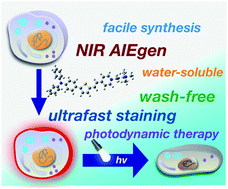
Chem. Sci., 2018,9, 3685-3693
https://doi.org/10.1039/C7SC04963C
Trends in activity for the oxygen evolution reaction on transition metal (M = Fe, Co, Ni) phosphide pre-catalysts
A notable trend in OER activity on transition metal phosphide pre-catalysts is reported. Remarkably, the tri-metallic FeCoNiP pre-catalysts exhibit exceptional apparent and intrinsic OER activities, outperforming many non-precious OER catalysts reported previously.
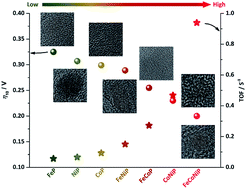
Chem. Sci., 2018,9, 3470-3476
https://doi.org/10.1039/C7SC05033J
Computational evaluation of metal pentazolate frameworks: inorganic analogues of azolate metal–organic frameworks
We report a periodic density-functional theory evaluation of putative frameworks, including a topologically novel arhangelskite (arh) structure, based on the pentazolate ion, the ultimate all-nitrogen, inorganic member of the azolate series of aromatic 5-membered ring anions.
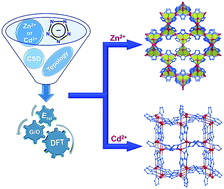
Chem. Sci., 2018,9, 3367-3375
https://doi.org/10.1039/C7SC05020H
Fluorescent dyes and probes for super-resolution microscopy of microtubules and tracheoles in living cells and tissues
Nanoscopy compatible fluorescent tubulin probes can be used to stain microtubules and chitin-rich taenidia in the insect tracheoles.
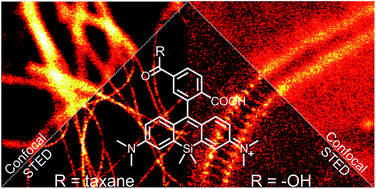
Chem. Sci., 2018,9, 3324-3334
https://doi.org/10.1039/C7SC05334G
A highly integrated DNA nanomachine operating in living cells powered by an endogenous stimulus
An elegant, highly integrated DNA nanomachine powered by endogenous ATP molecules was developed for specific microRNA imaging in living cells.

Chem. Sci., 2018,9, 3299-3304
https://doi.org/10.1039/C8SC00049B
Design, synthesis, and time-gated cell imaging of carbon-bridged triangulenium dyes with long fluorescence lifetime and red emission
Introduction of an isopropyl bridge in the triangulenium skeleton leads to a new series of redshifted triangulenium dyes with high fluorescence quantum yields and remarkable long fluorescence lifetime allowing for time-gated cell imaging.
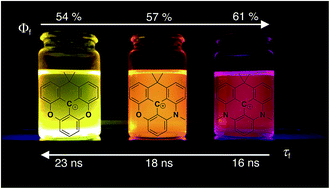
Chem. Sci., 2018,9, 3122-3130
https://doi.org/10.1039/C8SC00089A
High-throughput identification of G protein-coupled receptor modulators through affinity mass spectrometry screening
High-throughput identification of GPCR modulators through affinity MS screening.

Chem. Sci., 2018,9, 3192-3199
https://doi.org/10.1039/C7SC04698G
Spironaphthoxazine switchable dyes for biological imaging
We demonstrate that a photochromic spironaphthoxazine switch operates with excellent fatigue resistance and high conversion when irradiated at 405/561 nm in a range of media including living cells.
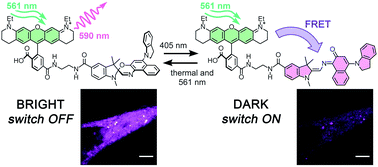
Chem. Sci., 2018,9, 3029-3040
https://doi.org/10.1039/C8SC00130H
Extraction of nickel from NiFe-LDH into Ni2P@NiFe hydroxide as a bifunctional electrocatalyst for efficient overall water splitting
Ni2P@FePOx has been synthesized via extraction and selective phosphorization of nickel in NiFe-LDH, and then conversed to a new heterostructure of Ni2P@NiFe hydroxide (P-NiFe) during water splitting. P-NiFe can act as an efficient bifunctional electrocatalyst for overall water splitting.
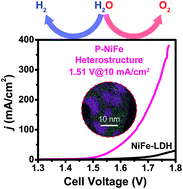
Chem. Sci., 2018,9, 1375-1384
https://doi.org/10.1039/C7SC04569G
Ligand-enabled ortho-C–H olefination of phenylacetic amides with unactivated alkenes
Here we report a quinoline-derived ligand that enables the Pd(II)-catalyzed olefination of the C(sp2)–H bond with simple aliphatic alkenes using a weakly coordinating monodentate amide auxiliary.

Chem. Sci., 2018,9, 1311-1316
https://doi.org/10.1039/C7SC04827K
A durable monolithic polymer foam for efficient solar steam generation
A self-floating sturdy polymer foam which by itself enables efficient solar steam generation without optical concentration.
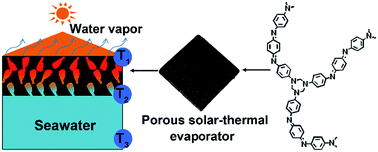
Chem. Sci., 2018,9, 623-628
https://doi.org/10.1039/C7SC02967E
Scalable thioarylation of unprotected peptides and biomolecules under Ni/photoredox catalysis
A mechanistically distinct, Ni/photoredox-catalyzed arylation of unprotected, native thiols (e.g., cysteine residues) is reported – a process initiated through a visible light-promoted, hydrogen atom transfer (HAT) event under ambient conditions.
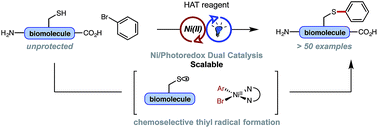
Chem. Sci., 2018,9, 336-344
https://doi.org/10.1039/C7SC04292B
Deformylation reaction-based probe for in vivo imaging of HOCl
We report a near-infrared emissive probe which can detect HOCl in vivo by both fluorescence imaging and the naked eye.
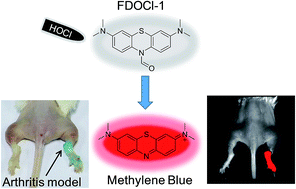
Chem. Sci., 2018,9, 495-501
https://doi.org/10.1039/C7SC03784H
MoleculeNet: a benchmark for molecular machine learning
A large scale benchmark for molecular machine learning consisting of multiple public datasets, metrics, featurizations and learning algorithms.
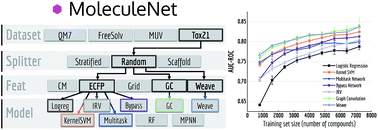
Chem. Sci., 2018,9, 513-530
https://doi.org/10.1039/C7SC02664A
Synthesis of ultrathin platinum nanoplates for enhanced oxygen reduction activity
Ultrathin Pt nanoplates exposing {111} facets are synthesized by galvanic-replacement-free templating of conveniently available Ag nanoplates, showing enhanced oxygen reduction activity.

Chem. Sci., 2018,9, 398-404
https://doi.org/10.1039/C7SC02997G
Understanding the origins of metal–organic framework/polymer compatibility
The microscopic interfacial structures for a series of metal–organic frameworks (MOFs)/polymer composites consisting of the Zr-based UiO-66 coupled with different polymers are systematically explored by applying a computational methodology that integrates density functional theory calculations and force field-based molecular dynamics simulations.

Chem. Sci., 2018,9, 315-324
https://doi.org/10.1039/C7SC04152G
Site-selective bromination of sp3 C–H bonds
A method for converting sp3 C–H to C–Br bonds using an N-methyl sulfamate directing group is described. For all sulfamates examined, bromination occurs with high selectivity at the γ-carbon, affording a predictable method for C–H bond halogenation.

Chem. Sci., 2018,9, 100-104
https://doi.org/10.1039/C7SC04611A
About this collection
In celebration of International Open Access Week 2018 we have drawn together some of our most popular papers from 2018 for you to enjoy. These papers have been selected to highlight the broad range of topics Chemical Science publishes and, as with all Chemical Science papers, they are of course free to read! Chemical Science is proud to be a fully Open Access journal with all APCs paid by the Royal Society of Chemistry.